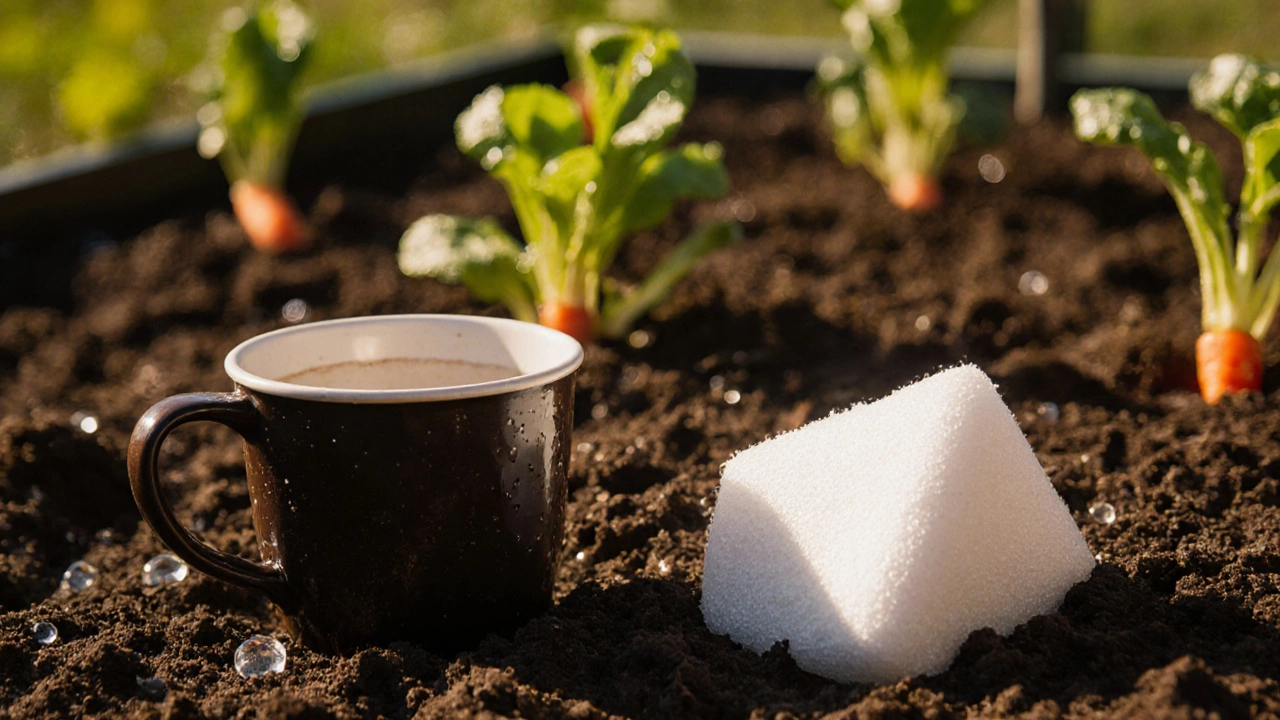Explore the safety of styrofoam in vegetable gardens, covering its effects on soil health, risks, benefits, alternatives, and practical guidelines for growers.
Polystyrene Mulch: What It Is, How It Works, and Where It Fits in Indian Gardens
When you hear polystyrene mulch, a synthetic, foam-based material used to cover soil in gardens and farms. Also known as expanded polystyrene (EPS) mulch, it’s not soil, not compost, and not biodegradable—but it does something few other mulches can: it keeps the ground warm and dry without breaking down. Unlike organic mulches like straw or wood chips, polystyrene doesn’t feed microbes or add nutrients. Instead, it acts like a blanket—blocking weeds, reducing water loss, and holding heat near plant roots. This makes it useful in places where soil temperature swings are harsh, like urban balconies in Delhi or dry terraces in Rajasthan.
It’s not magic, though. soil insulation, the ability of a material to reduce temperature changes in the ground is its main job. In early spring, when cold nights still linger but plants are ready to grow, polystyrene mulch can help seedlings survive. In monsoon-heavy areas like Kerala or West Bengal, it prevents soil from turning into mud and keeps roots from drowning. But here’s the catch: it doesn’t break down. That means if you use it, you’re committing to removing it later. Some farmers in Tamil Nadu use it for short-term crops like chilies or tomatoes, then collect and recycle the sheets after harvest. Others avoid it entirely because it can fragment into microplastics and pollute the soil long-term.
What about weed control, the practice of preventing unwanted plants from stealing water, light, and nutrients from crops? Polystyrene blocks sunlight, so weeds can’t sprout. But it’s not foolproof—edges lift, wind blows dust under it, and some tough weeds still push through. It works best when laid tightly over clean soil and held down with stones or stakes. Compared to black plastic, it’s lighter and easier to handle, but less durable. And unlike organic mulches, it doesn’t improve the soil after it’s gone. If you’re trying to build healthy soil over time, compost or leaf mold will do more for your garden than polystyrene ever will.
So who should use it? Gardeners with small, high-maintenance spaces—like balcony growers in Mumbai or terrace farmers in Bangalore—might find it handy for short-season crops. If you’re growing in containers and need to cut down on watering, it can help. But if you’re aiming for truly sustainable gardening, you’re better off with coconut coir, jute mats, or even shredded newspaper. Polystyrene mulch isn’t the future of farming. It’s a temporary fix for specific problems. And in India, where soil health and long-term land use matter more than ever, it’s worth asking: are you solving a problem… or creating a new one?
Below, you’ll find real-world examples from Indian gardens where people tried polystyrene mulch—and what happened next. Some found it useful. Others regretted it. No fluff. Just facts from the field.
